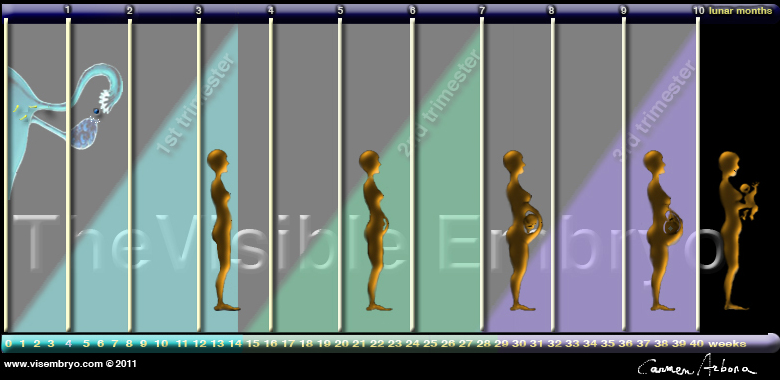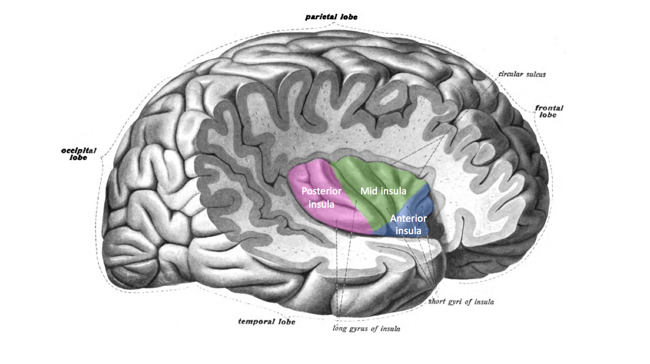|

CLICK ON weeks 0 - 40 and follow along every 2 weeks of fetal development
|
||||||||||||||||||||||||||||
Callous, unemotional traits in brains of boys Children and adolescents appear to react less to negative stimuli, often preferring risk over caution or fear. In recent years, researchers and doctors are increasing their attention on these personality traits, as such behavior is associated with more serious and persistent antisocial outcomes. However, until now, most research in this area was focused on studying callous-unemotional traits in populations with a psychiatric diagnosis, especially conduct disorder. This made it unclear whether associations between callous-unemotional traits and brain structure were only present in clinical populations already identified with increased aggression, or whether antisocial behavior and aggression explained the brain differences. The article is published in Neuro Image: Clinical. Using magnetic resonance imaging, researchers took a closer look at the brain development of typically-developing teenagers to find whether callous-unemotional traits are linked to differences in brain structure. The findings revealed that in typically-developing boys, the volume of their anterior insula - a brain region implicated in recognizing emotions and empathy - is larger in those with higher levels of callous-unemotional traits. This variation was only seen in boys, but not in girls with the same traits. "Our findings demonstrate that callous-unemotional traits are related to differences in brain structure in typically-developing boys without a clinical diagnosis. Highlights • Sex-specific correlations between callous-unemotional (CU) traits and insula volume. • CU-traits are positively linked to anterior insula in typically-developing boys. • Variations in insula volume explained 19% of the variance in CU-traits in boys. • Accounting for sex in neuroanatomical studies of individual differences is important. Abstract Callous-unemotional traits are characterized by a lack of empathy, a disregard for others' feelings and shallow or deficient affect, such as a lack of remorse or guilt. Neuroanatomical correlates of callous-unemotional traits have been demonstrated in clinical samples (i.e., adolescents with disruptive behavior disorders). However, it is unknown whether callous-unemotional traits are associated with neuroanatomical correlates within normative populations without clinical levels of aggression or antisocial behavior. Here we investigated the relationship between callous-unemotional traits and gray matter volume using voxel-based morphometry in a large sample of typically-developing boys and girls (N = 189). Whole-brain multiple regression analyses controlling for site, total intracranial volume, and age were conducted in the whole sample and in boys and girls individually. Results revealed that sex and callous-unemotional traits interacted to predict gray matter volume when considering the whole sample. This interaction was driven by a significant positive correlation between callous-unemotional traits and bilateral anterior insula volume in boys, but not girls. Insula gray matter volume explained 19% of the variance in callous-unemotional traits for boys. Our results demonstrate that callous-unemotional traits are related to variations in brain structure beyond psychiatric samples. This association was observed for boys only, underlining the importance of considering sex as a factor in future research designs. Future longitudinal studies should determine whether these findings hold over childhood and adolescence, and whether the neuroanatomical correlates of callous-unemotional traits are predictive of future psychiatric vulnerability. General scientific summary This study suggests that callous-unemotional traits have a neuroanatomical correlate within typically developing boys, but not girls. Bilateral anterior insula volume explains up to 19% of the variance in callous-unemotional traits in boys. Authors: Nora Maria Raschle, Willeke Martine Menks, Lynn Valérie Fehlbaum, Martin Steppan, Areti Smaragdi, Karen Gonzalez-Madruga, Jack Rogers, Roberta Clanton, Gregor Kohls, Anne Martinelli, Anka Bernhard, Kerstin Konrad, Beate Herpertz-Dahlmann, Christine M. Freitag, Graeme Fairchild, Stephane A. De Brito, Christina Stadler Open Access funded by European Research Council. This study is part of the FemNAT-CD project, a large Europe-wide research project aiming at investigating neurobiology and treatment of adolescent female conduct disorder. Return to top of page | Jan 8, 2018 Fetal Timeline Maternal Timeline News News Archive  Why is physical aggression in boys not unusual? It appears driven by a correlation between callous-unemotional traits and the size of the bilateral anterior insula in boys — but not in girls.
|
||||||||||||||||||||||||||||


